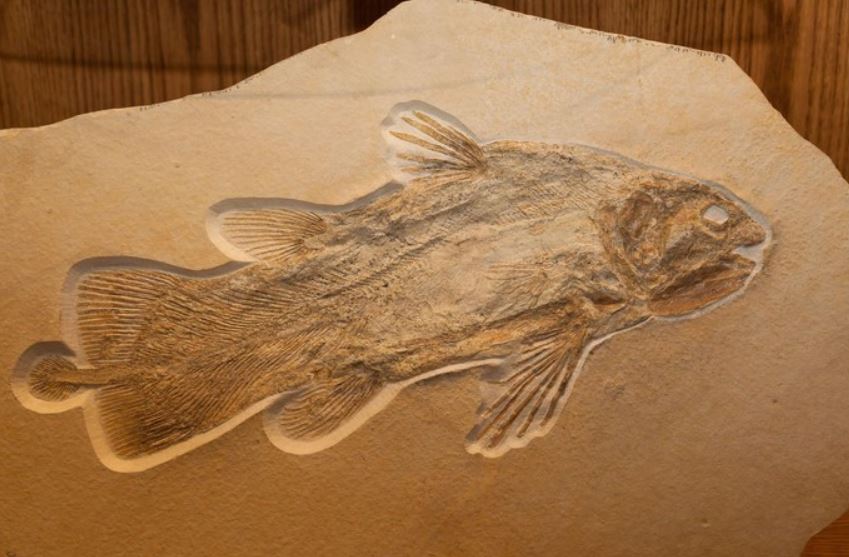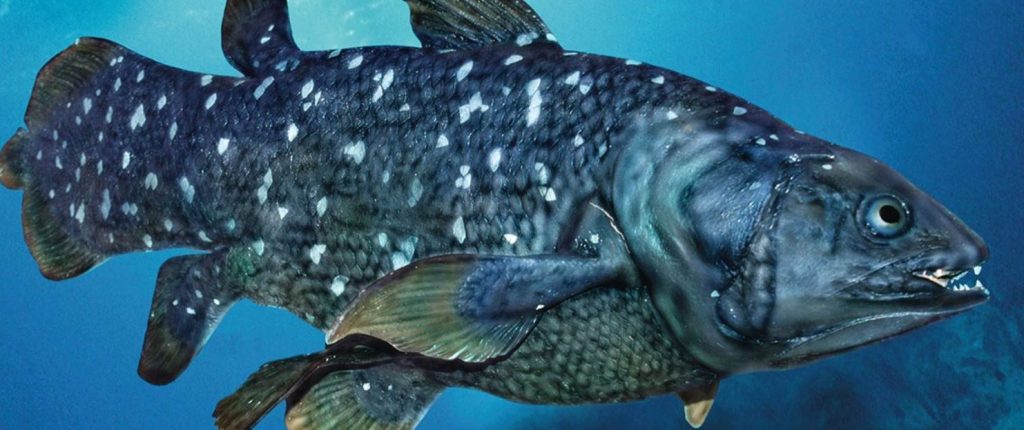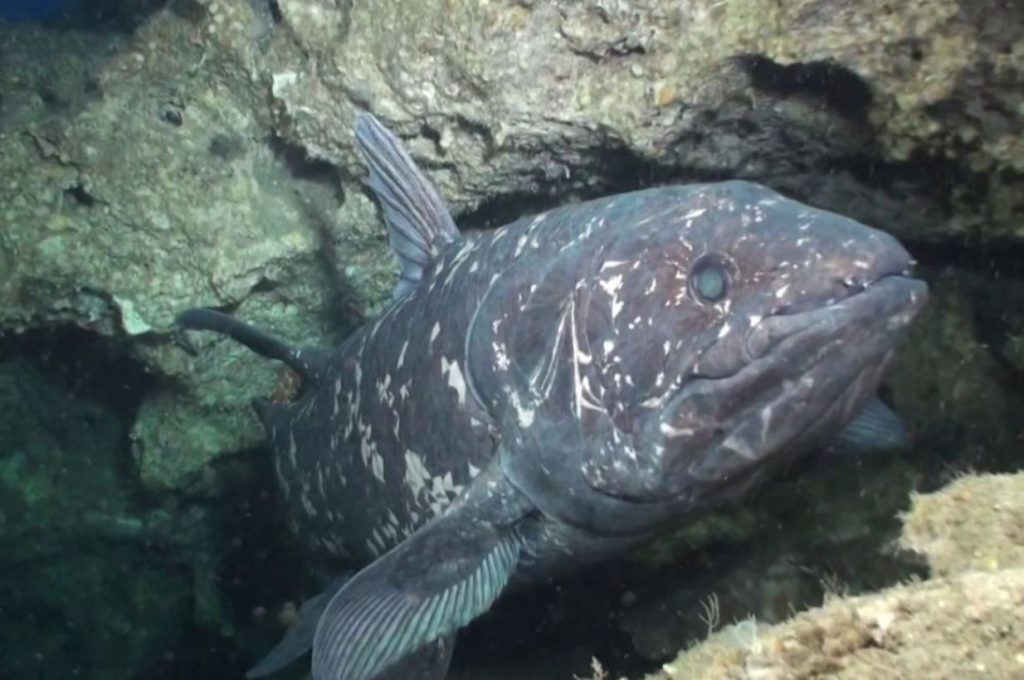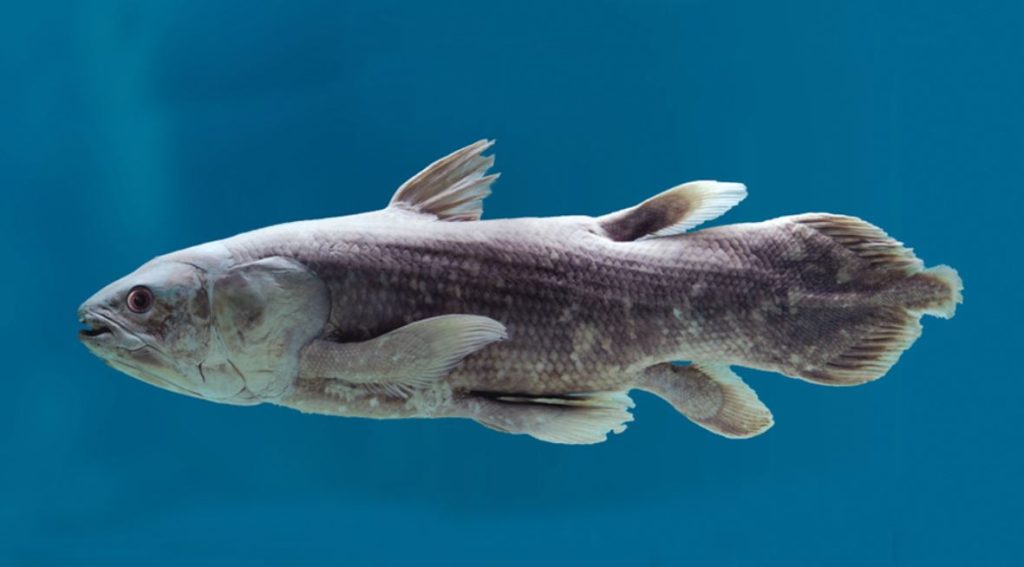Discover the captivating world of coelacanths, often referred to as “living fossils,” as they have remained relatively unchanged for millions of years. These remarkable creatures share a closer evolutionary connection with four-limbed vertebrates, including humans, rather than many other fish species.
For a long time, coelacanths were believed to have vanished approximately 70 million years ago, known solely through fossils. However, in a stunning turn of events, a living coelacanth was unexpectedly caught off the shores of South Africa in 1938, essentially resurrecting the species. Since then, numerous additional coelacanths have been discovered, and today we recognize the existence of two living species. Unfortunately, one of these species, the West Indian coelacanth, is critically endangered, with estimates suggesting that fewer than 500 individuals remain.
Delve deeper into the world of these mesmerizing fish, and unlock intriguing facts about them:
Coelacanth Facts in Brief:
- Other name(s): Latimeria
- Animal Order: Coelacanthiformes
- Type of Animal: Fish
- Habitat: Northern Sulawesi and the eastern coast of Africa
- Length: Up to 2 meters (6 feet 6 inches)
- Weight: Up to 90 kilograms (200 pounds)
Conservation Status:
- West Indian coelacanth: Critically Endangered
- Indonesian coelacanth: Vulnerable
Meet The Coelacanths: Introduction
Coelacanths, which belong to the fish order Coelacanthiformes, were once thought to exist only as fossilized remains. It was believed that the last coelacanths went extinct around 66-70 million years ago, during the late Cretaceous period.
In 1938, the scientific community was astonished when a living coelacanth was discovered. Presently, there are two known species of living coelacanths: the West Indian coelacanth (Latimeria chalumnae) and the Indonesian coelacanth (Latimeria menadoensis).
Fossils have revealed approximately 80 different species of coelacanths.

Coelacanths, fascinating creatures of the deep, share a closer kinship with tetrapods, the four-limbed vertebrates, rather than the ray-finned fish that dominate the aquatic world. Some have proposed that coelacanths serve as a direct evolutionary bridge connecting these two groups.
However, present-day evidence does not strongly support this hypothesis.
In their living counterparts, coelacanths find their closest relatives in the air-breathing lungfishes, which inhabit regions of Africa, South America, and Australia.
The name Coelacanthiformes, derived from Greek origins, aptly describes these creatures with their distinctive “hollow spine.”

The two surviving coelacanth species bear a striking resemblance to each other in terms of their physical features. They possess robust, bulky bodies that are shielded by thick scales. What sets individual coelacanths apart is the distinct pattern of white speckles adorning their bodies.
Coelacanths boast a total of eight fleshy, lobed fins. These include a pair of dorsal fins, a pair of pectoral fins, a pair of pelvic fins, as well as a single anal fin and caudal fin. The caudal fin, which corresponds to the tail, is divided into three sections, with a secondary tail segment extending beyond the primary one.
When it comes to size, female coelacanths typically surpass their male counterparts, and present-day coelacanths seem to be larger than their extinct ancestors.

Unusual Anatomical Features
The coelacanths possess intriguing internal characteristics that are either exclusive to their order or seldom found in other vertebrates.
Located at the posterior part of the coelacanth’s skull, there exists a flexible joint that grants the creature an exceptional ability to widen its jaws significantly. Rather than a traditional backbone, the coelacanth boasts a notochord that is hollow and filled with fluid.
In terms of its anatomy, the coelacanth displays a heart resembling a straight tube, while its braincase predominantly consists of fat, with only 1.5% of the space occupied by brain tissue. Unlike most fish, the coelacanth lacks a swim bladder and instead possesses a fatty organ. Additionally, its two kidneys are fused together, forming a singular entity.
Where Are Coelacanths Found?
Coelacanths, fascinating ancient fish, inhabit the eastern African coastline and the vicinity of Sulawesi, Indonesia. The Comoro Islands, nestled between Mozambique on the African mainland and Madagascar, host the most extensive known population of the West Indian coelacanth.
These remarkable creatures can also be found in smaller breeding groups or as individual specimens in the waters of Kenya, Tanzania, Mozambique, South Africa, and Madagascar.
Off the shores of Manadotua, an island nestled close to the northernmost point of Sulawesi, the fascinating Indonesian coelacanth has been sighted and documented.
Coelacanth Habitat
Coelacanths call temperate waters their home, where the temperature is neither scorching hot nor freezing cold. When the sun is high, these fascinating creatures prefer the shelter of shallow underwater caves and crevices nestled within volcanic slopes. They reside at depths ranging from 150 to 240 meters (500 to 800 feet). As night falls, they might venture into deeper waters, exploring the mysteries that lie beneath.
Behavior
Coelacanths exhibit a fascinating behavior where they gather in groups within caves during daylight hours, yet they tend to keep to themselves without engaging in social interactions or physical contact. However, when night falls, these enigmatic creatures venture out individually to embark on their solitary hunting endeavors.
Senses
Coelacanths possess a distinct sensory apparatus within their snouts known as the rostral organ, enabling them to perceive electrical signals. Although the exact purpose of this organ remains uncertain, it potentially serves various functions such as aiding in obstacle avoidance, identifying individuals, or pinpointing the whereabouts of prey.
Movement
Coelacanths exhibit a remarkable method of swimming: their fin-like limbs gracefully maneuver in a coordinated, alternating motion, reminiscent of a galloping horse. These ancient creatures possess extraordinary agility, granting them the ability to gracefully navigate through the water in any desired direction.
Coelacanth Life Cycle
Limited knowledge exists regarding the mating habits of coelacanths, but it appears that each group of offspring is sired by a single male. It is believed that the male utilizes a modified organ to internally fertilize the female.
Coelacanths exhibit ovoviviparity, meaning the fertilized eggs remain within the female’s body until the young are fully developed and ready to be born. The duration of gestation is estimated to range from 13 months to 3 years, during which the embryos receive nourishment from the yolk sac of the eggs.
Only two instances of female coelacanths carrying offspring have been documented: one with 5 pups and the other with 26 pups. These near-term young measured approximately 35 cm (14 in) in length and weighed around 500 g (18 oz.). Although they share a striking resemblance to adults in terms of appearance, the young possess relatively larger eyes compared to their body size, and their body features a more pronounced downward slope.
What Do Coelacanths Eat?
Coelacanths have a diverse diet consisting of fish and cephalopods like cuttlefish and squid.
While they can move quickly, coelacanths have a laid-back approach to feeding. Instead of actively chasing their prey, they prefer to leisurely drift and patiently await the arrival of a suitable-sized meal within their reach. Once the opportunity presents itself, they swiftly grab it with their mouths.
Coelacanth Predators
Coelacanths, fascinating ancient fish, have an interesting relationship with predators. Among the known predators, humans stand out as the primary threat to their existence. However, intriguing observations have shown that when coelacanths encounter unfamiliar objects, they display signs of panic, indicating the possible presence of other deep-water predators that prey upon them. This is further supported by the discovery of bite marks on certain coelacanth individuals.
Another captivating aspect of coelacanths is their remarkable color pattern. The scales of these creatures bear a striking resemblance to the appearance of their cave habitats. This intriguing adaptation suggests that coelacanths utilize camouflage to blend seamlessly into their surroundings, effectively avoiding potential predators.
Are Coelacanths Endangered?

The West Indian coelacanth has been classified as “Critically Endangered” by the IUCN, indicating its high risk of extinction. On the other hand, the Indonesian coelacanth is categorized as “Vulnerable,” suggesting it is at a relatively lower risk but still facing significant threats.
The global population of West Indian coelacanths is believed to be less than 500 individuals, highlighting the critical state of this species. In comparison, the estimated population size of Indonesian coelacanths is fewer than 10,000 individuals, signifying a relatively larger but still concerning population.
While coelacanths are not sought after as a food source due to their slimy and hard-to-digest flesh, they face unintentional capture in fishing nets, particularly gill nets and during deep-sea trawling. Although not directly targeted, these accidental captures contribute to the overall threat faced by coelacanths in their habitats.
